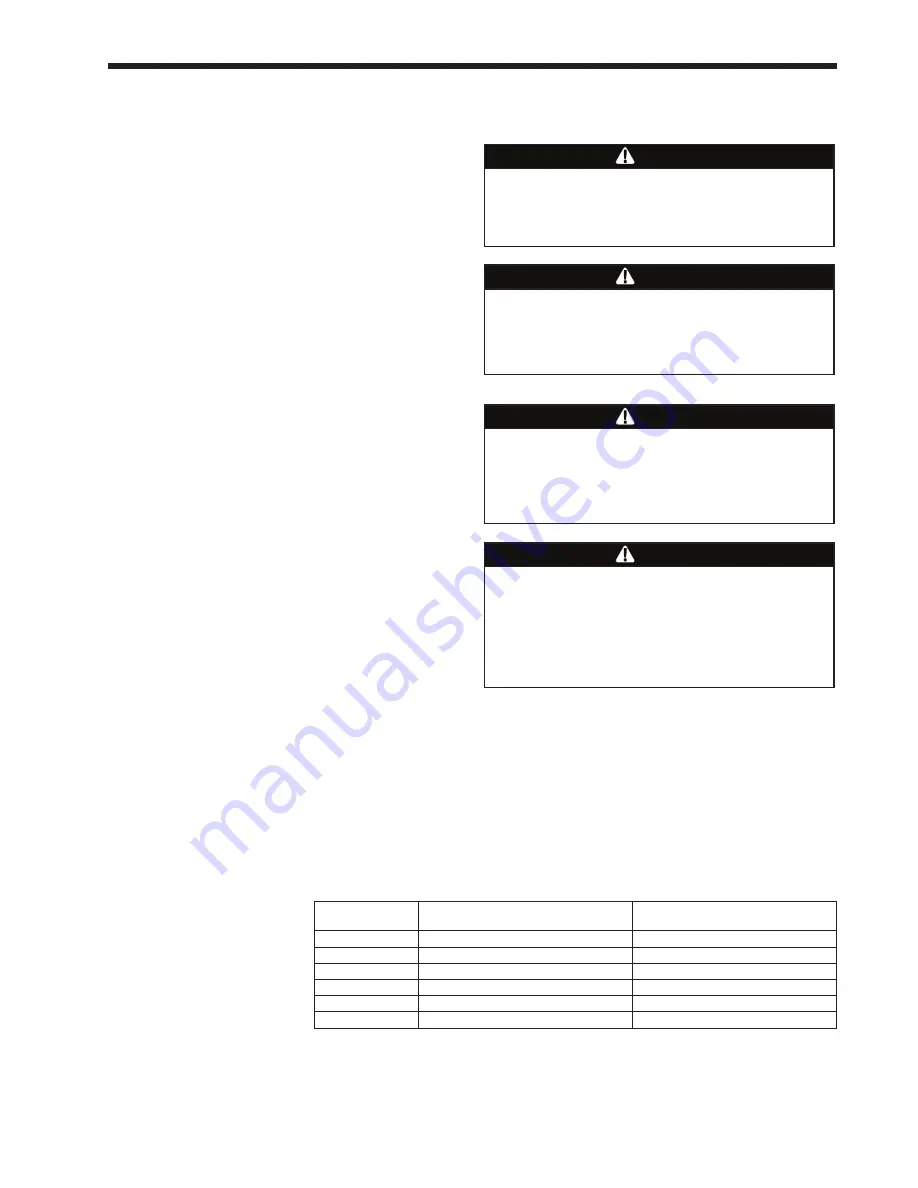
MagnaTherm Boilers and Water Heaters
Page 13
Other methods of introducing combustion and
ventilation air are acceptable, providing they conform
to the requirements in the applicable codes listed
above.
In Canada, consult local building and safety codes
or, in absence of such requirements, follow CAN/
CSA B149.
3.C.1 Ducted Combustion Air
The combustion air can be taken through the
wall, or through the roof. The manufacturer offers
accessories to use with ducted air systems, as
shown in Table 6.
See Table 7 to select the appropriate diameter air
pipe. When taken from the roof, a field-supplied
rain cap or an elbow arrangement must be used to
prevent entry of rain water. (See Figure 8).
Use ABS, PVC, CPVC, polypropylene, stainless
steel, or galvanized pipe for the combustion air
intake (See Table 7). The intake must be sized per
Table 3. Route the intake to the boiler as directly
as possible. Seal all joints. Provide adequate
hangers. The unit must not support the weight of the
combustion air intake pipe. The maximum equivalent
pipe length allowed is 100 feet (30 m).
Each elbow is considered to be 5 feet (1.5m)
When using polypropylene or stainless steel
materials in horizontal duct configurations, a single
elbow must be installed on the end of the air inlet
to act as an outdoor terminal. In vertical duct
applications, two elbows must be installed on the
end of the inlet to act as a vent terminal. When
elbows are use as terminals, appropriate screens
must be installed to prevent blockage.
The elbow(s) required for termination are not
included in the kits sown in Table 6
The connection for the intake air pipe is on the back
panel.
In addition to air needed for
combustion, air shall also
be supplied for ventilation,
including air required for
comfort and proper working
conditions for personnel.
Refer to the applicable
codes.
3.D Venting
WARNING
Selection of improper vent materials for
installations that are installed in closets, or will be
operated in high ambient temperature levels, may
lead to property damage, personal injury, or death.
WARNING
Failure to use the appropriate vent material,
installation techniques, or glues and sealants
could lead to vent failure causing property
damage, personal injury or death.
WARNING
Use of cellular core PVC (ASTM F891), cellular
core CPVC, or Radel® (polyphenolsulfone) in
non-metallic venting systems is prohibited and that
covering non-metallic vent pipe and fittings with
thermal insulation is prohibited.
WARNING
All venting must be installed according to this
manual and any other applicable local codes,
including but not limited to, ANSI Z223.1/NFPA 54,
CSA B149.1, CSAB149.2 and ULC S636. Failure
to follow this manual and applicable codes may
lead to property damage, severe injury, or death.
If the system temperatures are unknown at the
time of installation, class IIC or higher venting
material is recommended.
This unit is a Category II and IV appliance and
may be installed with vent materials meeting the
standards listed on Table 10.
The units vent can terminate through the roof, or
through an outside wall.
Table 8. Vent Sizing for Category II - Gravity Vent
Table 2 – Vent Sizing for Category II – gravity vent
Boiler Model
Vent Connection Size Diameter
(provided with boiler)
Vent Connector Size Diameter
(Increaser*)
MGH/V1600
6”
14”
MGH/V2000
8”
14”
MGH/V2500
8”
18”
MGH/V3000
10”
18”
MGH/V3500
10”
22”
MGH/V4000
12
22”
WARNING
: Vent must be installed with appropriate condensate traps and using only specific
manufacturers, models and materials outlined in this manual.
Draft must always remain between -0.1” and -0.001” at all firing rates. If pressures outside of
this range are measured, consult professional venting engineer for recommendations, such as
double-acting barometric dampers to avoid reduced performance or hazardous conditions.
















































